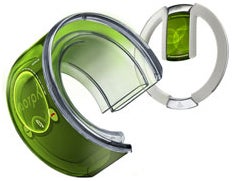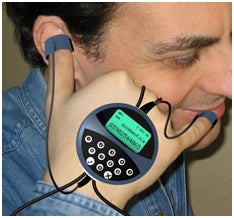Look around at people talking on their cell phones and, almost without exception, they are chatting on familiar-looking small rectangular boxes with glowing screens. However, this cookie-cutter approach to mobile phones will change dramatically in the next few years as phone designers get more daring and more personal.
"All phones today do the basics well," says Shiv Bakhshi, director of mobile device technology and trends at market analysis firm IDC. "But that won't be enough in the future."
(See Related Slideshow: )
We asked a dozen designers and industry leaders from around the world how mobile phones will change in the next few years. They gave us their predictions, and some provided peeks at concept phones that embody those new ideas.
Like concept cars -- and -- these concept phones are aimed more at demonstrating new ideas than at being prototypes of actual soon-to-be-released devices. Sometimes outrageous, other times merely flights of fancy, they typically are developed by independent design firms working behind the scenes for phone vendors, although some are designed by the vendors themselves.
We saw an eye-popping array of designs. Some are innovative and intriguing, while others are, well, a little unusual. But the designers and other experts agree on one thing: Future generations of phones will not look or act like current phones.
Here's what to keep an eye out for.
Shape shifter
One of the most striking concept phones we've seen is Nokia's Morph. Made of flexible materials that mimic the suppleness of spider's silk, the handset will -- as the name implies -- morph between what looks like a traditional mobile phone and a bracelet. Tapani Ryhanen, head of strategic research at the Nokia Research Center in Ruoholahti, Finland, calls Morph a shape shifter.
"By using nanotechnology," Ryhanen says, "the phone can change its personality to become whatever is most suitable for the task at hand."

Plus, its electronics are expected to be so small that they're invisible to the naked eye. This will allow designers to make the phone clear rather using a painted case that hides the chips and wires inside, according to Ryhanen.
And slobs of the world can rejoice: Morph will even clean itself. "It will shed foreign material, similar to how a freshly waxed car will repel water and allow it to roll off," Ryhanen says.
Morph will also help you live more healthily. An array of microscopic sensors will enable the phone to measure environmental hazards such as carbon dioxide levels or sense the blood sugar imbalance of a diabetic. "The nanosensors will continuously monitor different environmental things, from air pollution to the body's biochemical processes," says Ryhanen.
Currently, Morph relies on technologies that are still in the lab. Ryhanen thinks Morph could be possible in seven to 15 years.
Using your body
By contrast, the technology to develop Handphone, created by Massimo Marrazzo of Turin, Italy-based design firm Biodomotica, is available today.
Handphone's microphone is shaped like a ring and slips on the end of your pinky. The speaker is another ring that slips on your thumb, and a circular phone controller and radio sit on the back of your hand, held on by elastic string at your wrist and middle finger.

Anyone who's ever motioned toward their mouth and ear with outstretched fingers to imitate making a call will know how to use Handphone. "Hey, call me," jokes Marrazzo. "The gesture is natural for people."
By definition, Handphone is not hands-free, but "dialing, picking up and hanging up the phone are voice-activated," says Marrazzo.
According to the designer, every aspect of Handphone is doable today. The concept just needs a manufacturer to accept the design and produce it.

No comments:
Post a Comment